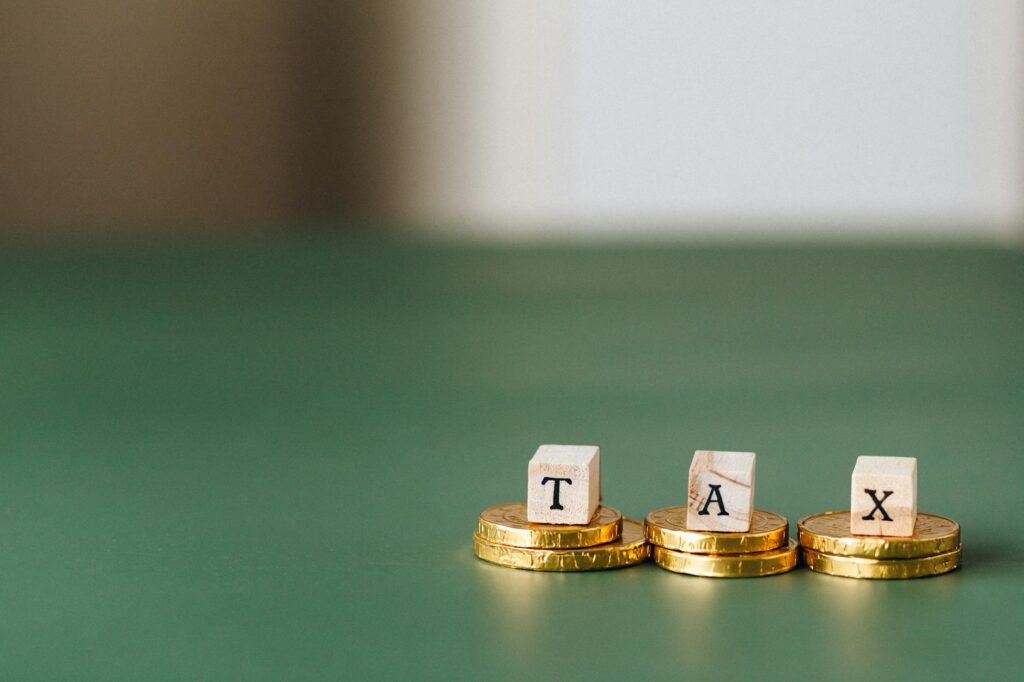The Great Unraveling: Why Your Stuff Is Stuck on a Boat
Remember 2021? Empty shelves, cars without chips, and that one container ship stuck sideways in the Suez Canal that basically gave the entire global economy a panic attack. It felt… fragile. We all got a front-row seat to the chaos caused by supply chain disruptions. For decades, we’d built this incredibly complex, globe-spanning system to get us everything from avocados to iPhones, and it seemed to work. Until it didn’t. The slightest hiccup—a pandemic, a port closure, a trade dispute—and the whole Jenga tower started to wobble. It turns out, the system that brought us cheap goods was built on a foundation of blind spots, paperwork, and siloed information. So, what if we could rebuild it on a foundation of trust? That’s not just a nice idea; it’s the core promise of blockchain technology.
Key Takeaways
- Global supply chains are surprisingly fragile, opaque, and inefficient, making them vulnerable to disruptions.
- Blockchain technology offers a solution by creating a shared, unchangeable (immutable) digital ledger that all parties in a supply chain can access.
- This leads to radical transparency, allowing for real-time tracking of goods from origin to consumer.
- Smart contracts, built on blockchain, can automate processes like payments and customs clearance, drastically reducing delays and administrative costs.
- By improving traceability and trust, blockchain helps combat counterfeit goods, ensures ethical sourcing, and builds a more resilient global trade network.
The Cracks in the Modern Supply Chain
To understand why blockchain is such a game-changer, you first have to appreciate just how broken the current system is. It’s not one single thing; it’s a death by a thousand paper cuts. Imagine you’re shipping a container of coffee beans from Colombia to a roaster in Germany. That single journey can involve up to 30 different organizations—farmers, exporters, freight forwarders, shipping lines, port authorities, customs agents, distributors. Each one has its own ledger, its own software, its own way of doing things. It’s a mess.
The information flow is a disaster. Someone sends a PDF. Someone else faxes a form (yes, faxes). A crucial document like a Bill of Lading, which is basically the title deed for the cargo, is a physical piece of paper that has to be couriered around the world. If it gets lost or delayed, the entire shipment grinds to a halt. This reliance on fragmented, manual processes creates massive inefficiencies. But the bigger problem is the lack of trust. Because nobody has a complete, shared view of the truth, every step is filled with friction, verification, and potential for error or outright fraud.
This opacity has serious consequences:
- Lack of Visibility: When a crisis hits, like a port strike, it can take days or even weeks for a company to figure out exactly where its products are and how to re-route them. They’re flying blind.
- Counterfeiting and Fraud: It’s shockingly easy to introduce fake goods into the supply chain. From counterfeit pharmaceuticals that can kill people to fake luxury handbags that dilute brand value, the lack of verifiable product history is a massive vulnerability.
- Inefficiency and Delays: Think of all the time wasted reconciling different sets of books, waiting for payments to clear, and chasing down paperwork. These administrative burdens add huge costs and delays that ultimately get passed on to the consumer.
- The Bullwhip Effect: Small changes in consumer demand can create massive, amplified waves of disruption further up the supply chain simply because information isn’t shared effectively. A retailer sees a small spike in demand and orders more, the wholesaler sees that bigger order and orders even more, and so on, leading to massive overstocks or shortages.

How Blockchain Tackles Supply Chain Disruptions
So, how does a technology best known for cryptocurrencies like Bitcoin fix a container ship traffic jam? It’s important to separate the technology (blockchain) from its first application (Bitcoin). Think of blockchain as a new kind of database. A really special one.
Imagine a shared digital notebook that every single participant in that coffee bean journey has a copy of. When the farmer hands off the beans to the exporter, they write a new entry in the notebook: “100 bags of Grade A Arabica transferred from Farm X to Exporter Y on this date.” This entry, called a ‘block,’ is digitally signed and timestamped. It’s then broadcast to everyone in the network, and once they all agree it’s valid, it’s added to the chain of previous entries. Here’s the magic: once an entry is added to this shared notebook, it can never be altered or deleted. It’s immutable. If someone tries to change it, their copy of the notebook won’t match everyone else’s, and the change will be instantly rejected. This creates a single, verifiable source of truth that everyone can trust without needing to trust each other directly.
Unbreakable Transparency and Traceability
This shared ledger is the antidote to the black holes of information in traditional supply chains. Every time a product changes hands, is inspected, or passes through a checkpoint, a new, permanent record is created on the blockchain. You can scan a QR code on a bag of coffee in that German cafe and instantly see its entire journey: the farm it came from, the date it was harvested, the certifications it holds, when it cleared customs. Everything.
This isn’t just about satisfying curious consumers. For businesses, this level of traceability is revolutionary. If there’s a food safety recall, a company like Walmart (which is already a heavy user of blockchain for this purpose) can pinpoint the exact contaminated batch in seconds, not weeks, saving millions of dollars and potentially lives. For ethically sourced goods, like diamonds or cobalt, it provides an irrefutable record to prove they didn’t come from conflict zones.
Smart Contracts: Automating Trust and Efficiency
If the shared ledger is the ‘what’ and ‘where’ of blockchain, smart contracts are the ‘how’. A smart contract is just a piece of code that lives on the blockchain and automatically executes when certain conditions are met. It’s a digital ‘if-then’ statement that no one can interfere with.
Let’s go back to our coffee beans. We can create a smart contract that says: “IF the container’s GPS confirms it has arrived at the Port of Hamburg, AND IF the customs agent’s digital signature confirms the duties have been paid, THEN automatically release payment from the roaster’s account to the exporter’s account.”
Boom. No more waiting for invoices to be processed. No more international bank transfer delays. No more arguments over whether the terms of the deal were met. The contract executes itself based on verifiable data on the blockchain. This single innovation can eliminate mountains of administrative work, slash transaction times from days to seconds, and free up enormous amounts of working capital that’s currently tied up in transit.

Combating Counterfeits and Ensuring Authenticity
The pharmaceutical industry loses over $200 billion annually to counterfeit drugs. The luxury goods market is plagued by fakes. Blockchain provides a powerful weapon in this fight. Each legitimate product can be given a unique digital identity on the blockchain at the point of creation. This ‘digital twin’ is updated at every step of its journey.
When a consumer receives a high-end watch or a bottle of prescription medicine, they can scan a secure tag on the packaging. This scan queries the blockchain and instantly verifies the product’s entire history, confirming its authenticity. Any item without a valid history is immediately identifiable as a fake. This gives brands and consumers an unprecedented level of security and confidence.
“The supply chain is a system of systems. It’s a network of companies, people, and technologies. Blockchain doesn’t just improve one part of it; it provides a new, more reliable operating system for the entire network to run on.”
Putting Theory into Practice: The Pioneers
This isn’t just theoretical. Major global players are already implementing blockchain solutions and seeing real results:
- IBM Food Trust: This is one of the most well-known platforms, used by giants like Walmart, Nestlé, and Carrefour. As mentioned, they’ve used it to track everything from leafy greens to pork, reducing the time it takes to trace a food’s origin from nearly a week to just 2.2 seconds.
- TradeLens: A collaboration between Maersk and IBM, this platform aims to digitize the entire global shipping ecosystem. It provides a shared view of shipping data and documents for everyone involved, from freight forwarders to port authorities, helping to streamline the flow of cargo and reduce paperwork.
- De Beers: The diamond giant uses a platform called Tracr to track diamonds from the mine all the way to the retailer. This creates an immutable audit trail that assures customers of their diamond’s authenticity and conflict-free origin.

The Road Ahead: Hurdles and Challenges
Of course, revolutionizing a multi-trillion-dollar global industry isn’t as simple as flipping a switch. There are significant challenges to overcome before blockchain becomes the standard.
First, there’s the issue of scalability and interoperability. Different companies are building different blockchain platforms, and for the system to work seamlessly, these platforms need to be able to talk to each other. We need industry-wide standards, much like the TCP/IP standards that allow the internet to function.
Second, there’s the ‘garbage in, garbage out’ problem. The blockchain itself is secure, but the data being put onto it still relies on humans or IoT sensors. If someone enters fraudulent data at the source, the blockchain will faithfully record that fraudulent data forever. So, robust systems for data verification at the point of entry are critical.
Finally, there’s the massive hurdle of adoption and regulation. Getting thousands of competing companies, big and small, across different countries with different laws, to agree on a new way of working is a monumental task. It requires a shift in mindset from guarding data to sharing it for the collective good. Governments and regulatory bodies also need to catch up and create frameworks that support this new digital infrastructure.
Conclusion
So, what’s the bottom line? The painful supply chain disruptions we’ve all experienced aren’t a temporary glitch; they’re a symptom of an outdated system cracking under modern pressures. We can’t just patch the old model. We need a fundamental upgrade.
Blockchain offers precisely that. It’s not a silver bullet, and the road to wide-scale adoption will be long and complex. But it provides a powerful framework for building the supply chains of the future: ones that are transparent, efficient, equitable, and far more resilient. By replacing opaque silos and manual paperwork with a shared, immutable source of truth, blockchain technology can restore trust to global trade and ensure that the next time a crisis hits, the Jenga tower doesn’t just wobble—it stands firm.
FAQ
Is blockchain the same thing as Bitcoin?
No, this is a common misconception. Think of it this way: the internet is the underlying technology, and email is one application built on it. Similarly, blockchain is the underlying technology—a distributed, immutable ledger—and Bitcoin is just the very first, and most famous, application built on top of it. The same blockchain principles can be used for countless other applications, like supply chain management, without involving any cryptocurrency at all.
Isn’t this technology too complicated and expensive for smaller businesses?
While developing a private blockchain from scratch can be resource-intensive, the barrier to entry is falling rapidly. The rise of Blockchain-as-a-Service (BaaS) platforms from companies like Amazon (AWS), Microsoft (Azure), and IBM allows businesses of all sizes to plug into existing blockchain infrastructure on a subscription basis. This means smaller suppliers and logistics partners can join these networks and reap the benefits of transparency and efficiency without needing a massive upfront investment or a team of developers.


